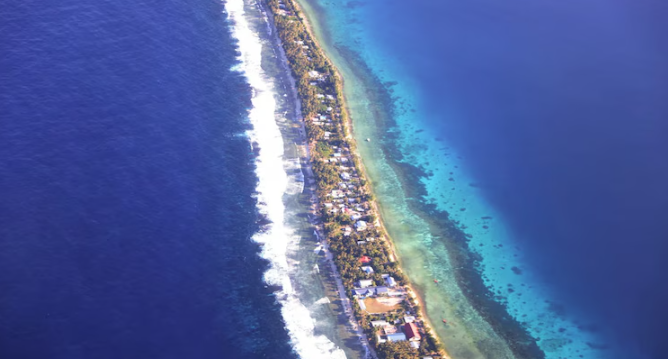Pacific Island Nations Face $10 Billion Cost to Adapt to Rising Seas
 Caroline
Caroline
A new World Bank report reveals that Pacific Island nations, including Kiribati, Tuvalu, and the Marshall Islands, will need nearly $10 billion to adapt to rising sea levels—an amount equivalent to 20 years of their combined gross domestic product (GDP). These nations, scattered across 6.4 million square kilometers of ocean and with elevations no higher than 2-3 meters above sea level, are among the most vulnerable to climate change.
A sea level rise of 0.5 meters by 2050, or more likely by 2070, could submerge large portions of these islands, threatening the livelihood of their populations. A third of the residents in Kiribati and Tuvalu are already at risk of falling into extreme poverty due to coastal flooding, and healthcare systems are under strain from increased heat-related illnesses.
The World Bank’s estimates highlight the immense costs of physical adaptation efforts, including the construction of seawalls, raising houses, and inland relocations. Kiribati faces a $3.7 billion price tag for these measures, while Tuvalu and the Marshall Islands would need $1 billion and $5 billion, respectively. These figures account only for physical adaptations and do not include the costs for necessary improvements in health, education, or infrastructure.
As the COP29 climate summit takes place in Azerbaijan, securing funding for such adaptation measures remains a central topic of discussion. The success of the summit may depend on agreements to address the significant climate funding gap facing the most vulnerable nations. The rising seas are not just a distant future threat—they’re a challenge that requires immediate action.
Subscribe to my newsletter
Read articles from Caroline directly inside your inbox. Subscribe to the newsletter, and don't miss out.
Written by

Caroline
Caroline
I’m Caroline, a Ph.D. holder with a passion for journalism.